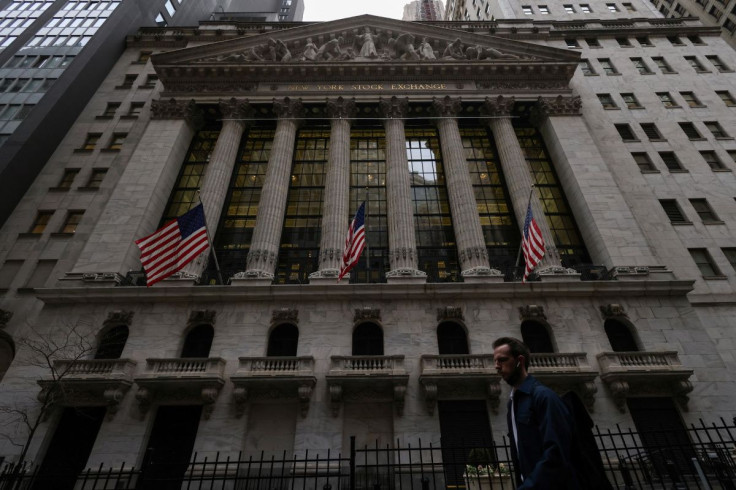Wall Street Slides As Decades-high Inflation Reading Invites Aggressive Fed Tightening

Wall Street slid on Thursday as inflation data hit a four-decade high, all but assuring the U.S. Federal Reserve would hike key interest rates at the conclusion of next week's monetary policy meeting to prevent the economy from overheating.
Simmering uncertainties surrounding Russia's invasion of Ukraine also helped convinced market participants to resume their flight to safety.
All three major indexes were red, though up from session lows, as the U.S. equities market followed its best day in months on Wednesday by resuming a multi-session sell-off during which the tech-heavy Nasdaq confirmed it is in a bear market.
Consumer prices surged in February to a 7.9% annual growth rate, according to the Labor Department, the hottest reading in forty years.
While the market fully expects the central bank to raise the Fed funds target rate by 25 basis points at the conclusion of next week's monetary policy meeting, the decades-high CPI data suggested the FOMC could move more aggressively to curb inflation in the upcoming year, as promised by Fed Chair Jerome Powell last week.
But Brian Jacobsen, senior investment strategist at Allspring Global Investments in Menomonee Falls, Wisconsin expressed doubt about how effective the Fed can be in this environment.
"This inflation report might be just a prelude to an even uglier report when we get the March data," Jacobsen said, adding, "The Fed can't bring peace to Ukraine and Russia, so there's little that monetary policy can do to tame food and energy inflation."
"It may have to just say that it is serious about fighting inflation, but it is also seriously hamstrung in what it can do right now," Jacobsen said.
The graphic below shows annual core CPI growth, along with other indicators, and how far they have soared above the Fed's average annual inflation target:
Energy prices were the main culprit, with gasoline prices surging 6.6% in a single month, although the report did not reflect the entirety of spiking crude prices in the wake of Russia's actions in Ukraine.
Those actions kept geopolitical jitters at a full boil, with peace talks showing little progress even as a humanitarian crisis unfolds and world oil supply pressures continued to weigh on global markets.
Amazon.com provided one of the day's bright spots, its shares jumping 6.0% after the e-commerce giant announced a 20-for-1 stock split and a $10 billion share buyback.
The Dow Jones Industrial Average fell 228.18 points, or 0.69%, to 33,058.07, the S&P 500 lost 32.5 points, or 0.76%, to 4,245.38 and the Nasdaq Composite dropped 169.19 points, or 1.28%, to 13,086.36.
Of the 11 major sectors in the S&P 500, tech suffered the biggest percentage drop, while energy shares were up most.
The NYSE FANG+ index of market leading tech and tech-adjacent megacaps was down nearly 3%.
Goldman Sachs Group Inc became the first major U.S. investment bank to announce it was closing operations in Russia. Its shares dropped 1.9%.
The S&P 500 banking index was last off nearly 2%.
Declining issues outnumbered advancing ones on the NYSE by a 2.59-to-1 ratio; on Nasdaq, a 2.68-to-1 ratio favored decliners.
The S&P 500 posted 3 new 52-week highs and 12 new lows; the Nasdaq Composite recorded 21 new highs and 149 new lows.
© Copyright Thomson Reuters 2024. All rights reserved.











